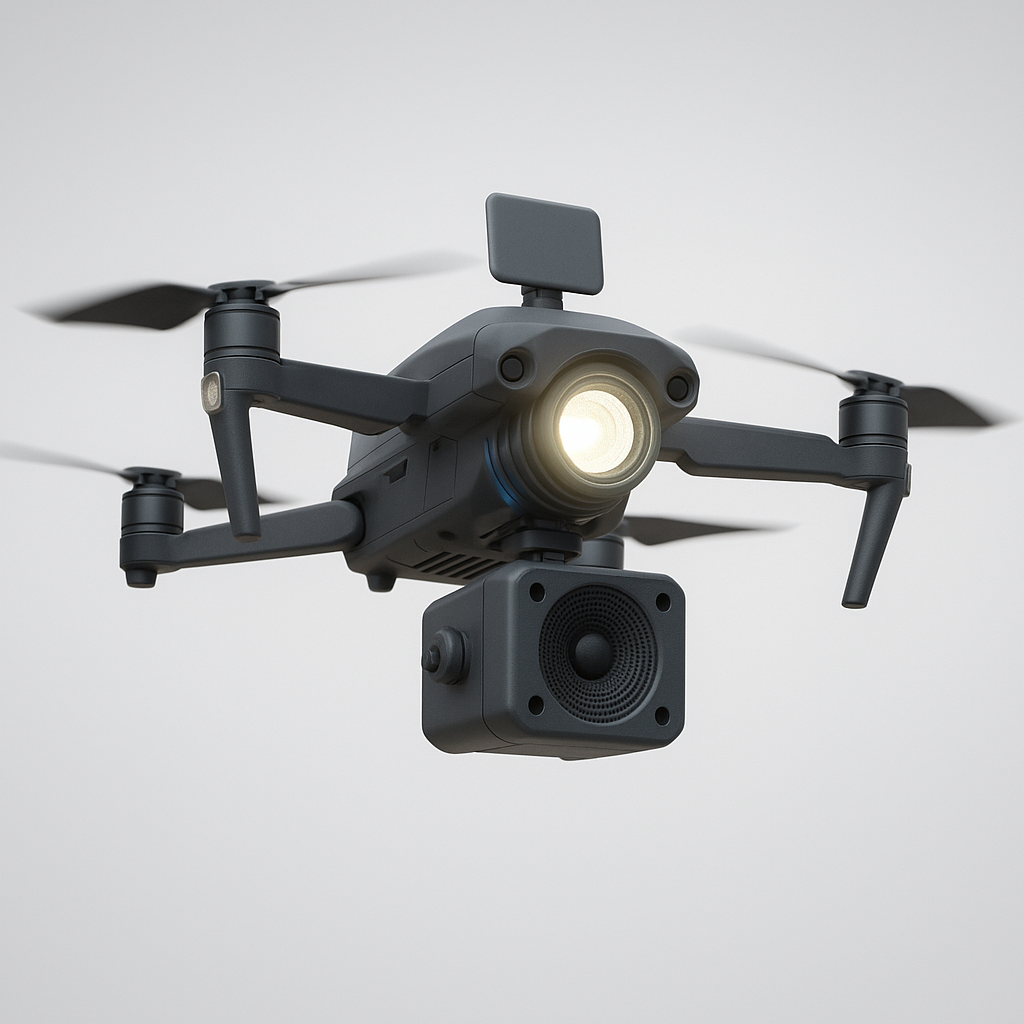Abstract
Current force protection at entry control points and in urban environments relies heavily on permanent infrastructure or manpower-intensive checkpoints, leaving gaps in rapid, scalable, and non-lethal response. The problem is the lack of mobile, adaptable systems that can both locate potential threats and apply graduated non-lethal effects to suppress or deter hostile individuals or groups.
Problem Statement
Security forces often face situations where individuals or vehicles approach sensitive facilities or checkpoints with unclear intent. Current non-lethal systems are either fixed in place (e.g., barriers, gates, acoustic hailing devices) or limited in range and mobility. This creates vulnerabilities in scenarios such as crowd control near critical infrastructure, rapid pop-up checkpoints in contested zones, or mobile force protection during convoy operations. Furthermore, existing detection methods rely on cameras or manual observation, which are limited in low-visibility or obstructed environments. There is a need for a mobile, scalable platform that can detect individuals through walls or cover, assess their position, and apply non-lethal suppression effects quickly without permanent harm.
Proposal
My team proposes a drone-based system equipped with high-intensity probing lights, directed acoustics, and WiFi-based occupant location detection (using CSI) to identify, disorient, and disperse threats while maintaining operator safety and minimizing risk of permanent harm. This solution offers both standoff capability and rapid deployment, addressing both personnel suppression and preemptive threat detection in dynamic environments.
Challenges and Unknowns
Combining WiFi-based sensing with optical (strobe/laser) and acoustic systems into a single drone payload poses technical integration, weight, and power management challenges. The degree to which light and acoustic effects reliably disorient or deter individuals may vary across environments, psychological states, or countermeasures. The system must operate reliably in GPS-denied or cluttered environments, requiring robust autonomous navigation and threat localization.

 OUSD Research and Engineering
OUSD Research and Engineering  West Point
West Point